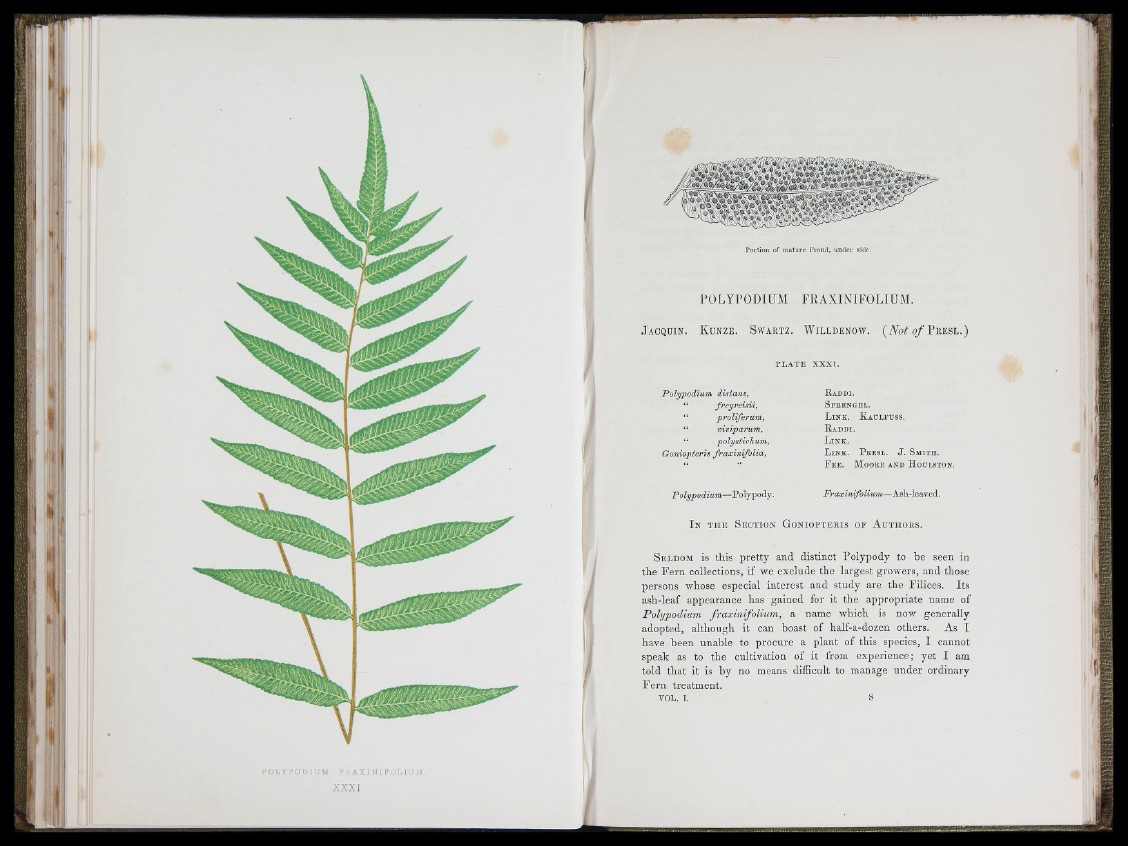
P o r tio n o f m a tu r e F r om l , u n d e r s id e .
POLYPODIUM FRAXINIFOLIUM.
J a c q u in . K u n z e . S w a r t z . W il l d e n o w . ( iV b i d/ P e e s l . )
P L A T E X X X I.
Polypodium distans,
“ fre y re is ii,
“ proliferum,
“ viviparum,
“ polystichum,
Goniopteris fra xin ifoU a ,
Polypodium—Polypody.
E a d d i .
S p e e n &e l .
L i n k . K a u l f u s s .
E a d d i .
L i n k .
L i n k . P e e s l . J . S m i t h .
F e e . M o o e e a n d H o u l s t o n .
Fra xin ifo lium—Ash-leaved.
I n t h e S e c t i o n G o n i o p t e r i s o f A u t h o r s .
S e l d o m is this p re tty and distinct Polypody to be seen in
the F e rn collections, if we exclude the largest growers, and those
persons whose especial interest and study are the Filices. Its
ash-leaf appearance has gained for it the appropriate name of
Polypodium fr a x in ifo lium , a name which is now generally
adopted, although it can boast of half-a-dozen others. As I
have been unable to procure a plant of this species, I cannot
speak as to the cultivation of it from experience; yet I am
told th a t it is h y no means difficult to manage under ordinary
F e rn treatment.
V O L , I. S